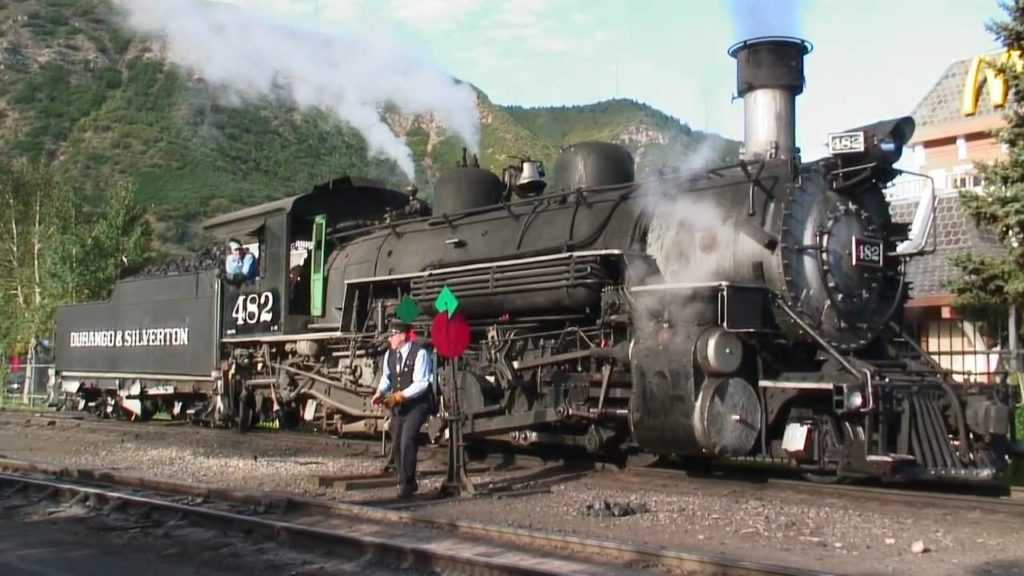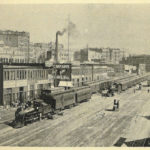
How did transportation change in the industrial revolutionFactories, whose name derived from the word, “manufactory”, and was very first built by Richard Arkwright, served excellent significance as portion of the considerable modifications to life around the globe the use of factories helped to satisfy human needs and wants with the quickened production of goods. Majestic, paddle-wheeled boats symbolized the new financial era, the most dramatic and colorful machines yet recognized to man. They fascinated young Samuel Clemens increasing up in otherwise dull Hannibal, Missouri. He saw them as his ticket out, functioning as a depth finder ( marking twain ”) and, at some point, a pilot himself. Later, he embellished his experiences in Life on the Mississippi (1883). Steamboats moved crops and folks up and down America’s 1st highway technique, but most of these rivers ran north and south. New liquid roads have been necessary to connect the highway technique east and west. So began the American age of canal constructing.
In spite of becoming a labor-saving device, the cotton gin paradoxically enhanced the demand for slaves since it produced increasing quick-staple cotton far more profitable. King Cotton spread from Georgia to East Texas and became the driving force behind the South’s new export economy. In reality, cotton became a driving force behind the whole American economy, amounting to a bigger business than banking, railroads, and (non-textile) factories combined, by the onset of the Civil War. Believe about that as we move forward in the course toward the Civil War. Southern cotton fueled the northern textile industry, the 1st key sector of the Industrial Revolution.
Clay Shirky has written, in response to individuals who mentioned the World wide web is destroying print, books, newspapers etc, that …the World wide web is the biggest group of individuals who care about reading and writing ever assembled in history.” And that is correct. Now take into account that a lot more individuals on the planet have much more access to music than ever ahead of. Then contemplate that your typical music customer employed to get about six CDs a year. Then take into account that Spotify has customers who pay $120 a year in subscriptions, of which 70% is paid out to music labels. That is cash that may well be regarded as found” cash, income that did not exist ahead of streaming services kicked in. Like I stated, if a musician decides against being in a music streaming service then their royalties are zero.
History British History In Depth how did transportation change in the industrial revolution
how did innovations in transportation change leisure activities during the 2nd industrial revolutionThe Industrial Revolution was a constructive time in Britain. BAN’s main concern is the export of toxic waste from industrial nations to Asia or Africa, where the merchandise are treated – or usually just burnt – with small regard for the environmental or overall health risks involved. The United States has a especially negative reputation when it comes to this sort of toxic trading. It is the world’s prime producer and exporter of electronic waste and it has by no means ratified the 1989 Convention of Basel, which regulates the “trans-boundary movements of hazardous waste and their disposal.” BAN estimates that amongst 50 and 100 WEEE containers travel every day – quite legally – fro the United States to Hong Kong, Asia’s principal port of entry.
RUSHKOFF: It really is partly how I was raised. But it is also that there are particular kinds of arguments you can make in them that you can’t make in an write-up. Most books right now aren’t even books, they’re these series of articles. People never have the stamina to write a real book any longer. I wanted to do two things. One, I wanted to say some thing that couldn’t be stated in a list of bullet points. And second, it really is type of a radical act in saying: I am providing two years of my human life to put collectively a single text artifact, and I am going to request that you seize authority of five or six hours of your life so you can read it.” So a gateway to understanding present shock is to somehow figure out a way that you have 5 hours. Just in receiving people to take that stand — 5 hours against the torrent of distractions — is itself an act against present shock.
The advent of the Industrial Revolution brought the division in between operate and household along with it. Metropolitan regions became centers for the creation of factories and jobs. They enticed a multitude of farming families to relocate into urban cities with promises of new jobs and possibilities. Households not only experienced alterations in the places of their residences, but also in the ways that parents interacted with their young children. Americans in the nineteenth century saw the emergence of the traditional nuclear non-farm families exactly where the father was viewed as the breadwinner, and the mother was seen as the homemaker (Scott, Treas, & Richards, 2008). The outcome of fathers leaving to work in factories was observed in enhanced reputation of a mother-centered method to youngster rearing. Hence, the Industrial Revolution – and subsequent rise in the urban job market place – clearly impacted people’s conception of parental roles.
Sheffield Improvements In Transportation During The Industrial Revolution
improvements in transportation during the industrial revolutionImprovements in transportation in the 1700s produced it less complicated for producers to transport goods. The enhanced communications played an important role in the uprising of the United States. By 1875 the Universal Postal Union had been established to facilitate the transmission of mail amongst foreign countries”(Fordham). In 1876, Alexander Graham Bell transmitted the human voice more than a wire.”(Fordham). The United States seemingly got smaller sized as new signifies of transport and communications speeded the pace of life. In 1871 the telegraph cables that had been attempted for a lengthy time have been ultimately capable to be heard across long distances. Messages could now be heard halfway about the world in a matter of minutes, speeding many industrial transactions for the United States. The improved communications had been excellent for the United States economy. It sped up trade with other countries and came with a breakout of the new advertising sector. The most beneficial factor of these communications was the sense of urgency and the speeded pace of life in the United States.
Because girls became a important element in the operate force, the size of families and loved ones ideals shifted. Individuals became concerned that young ladies wouldn’t want to follow in the footsteps of their loved ones any longer and would gravitate towards a more urban way of life, which in most instances did occur. This changed the way folks believed women need to act and reside their lives in the 19th century. Women also became involved in reform movements like the 1st union in the US, the Lowell Female Labor Reform Association in 1845. A main reform they fought for was the lowering of the operating hours from 12 a day to a maximum of ten. Although they had been only able to get it lowered to 11 hours in 1853, the Lowell girls employed notable practices and this union was instrumental in effecting how other labor organizing campaigns ran.
Commodore Perry’s arrival and forced opening of Japan’s trade with the outdoors planet rapidly revitalized the need for samurai as an elite fighting class. Shortly following these events Japan modernized it is military, incorporating a trained navy, usually operated by samurai. Industrialization, especially in types of military technologies, seemed at initial to favor and propagate the samurai’s place in society.
14 Market Revolutionswhat greatly improved transportation during the industrial revolution
how did innovations in transportation change leisure activities during the 2nd industrial revolutionThe initial exhibit I viewed was Tearing Down Families. New England pioneered mechanical manufacturing in America in the 1790s and it accelerated when President Jefferson’s 1807 Embargo cut off most European trade. While opposed by business leaders, his embargo and the War of 1812 had the lengthy-term effect of generating the U.S. a lot more self-enough. Even earlier, Engineer Samuel Slater built the 1st sophisticated water-powered cotton mill in Pawtucket, Rhode Island for Moses Brown after apprenticing in Jedidiah Strutt’s English stocking mill. Slater’s industrial espionage earned him the sobriquet Slater the Traitor” in Britain, but future president Andrew Jackson referred to as him the father of the American industrial revolution.” Francis Cabot Lowell snuck detailed power loom plans out of England and memorized other people, eventually developing forty cotton mills outside Boston. Later on, when Apple and Microsoft didn’t want their technology pirated across Asia, the U.S. argued for intellectual house rights, but not however.
Belgium was the second country soon after Excellent Britain to partake in the Industrial Revolution, producing it the first nation in continental Europe. Initially a traditional” nation of small villages and rural locations, Belgium’s leap into industrialization was mainly unexpected. It turned out, even so, that the nation was rich in coal, which was essential for industrialization. Coal reserves were abundant in south Belgium, referred to as Wallonia (French speaking southern Belgium). This area became the 1st to comply with the British model of industrialization successfully about the 1820s-1830s. In capitalizing on its deposits of coal and iron, Belgium exemplified the radical evolution of industrial expansion.” The nation grew to grow to be the 2nd greatest industrial energy (in proportion to its population and territory) behind Britain at the time.
Progressively, builders (normally nearby farmers, craftsmen, and laborers) networked America’s growing farms and factories with bridges and roads — a lot of constructed on current Indian trails cut in the logical routes between mountain passes, etc. The National Road, began in 1811 (left), was the very first to connect the East coast to the interior. Covered bridges, which numbered by the thousands in America by the finish of the 19th century, lengthened the life expectancy of wooden bridges by forestalling rot. But, offered their lack of pavement and unreliability in undesirable climate along with the non-existence of trucks, these wagon roads have been not enough. The burgeoning Market place Revolution needed railroads and canals.




